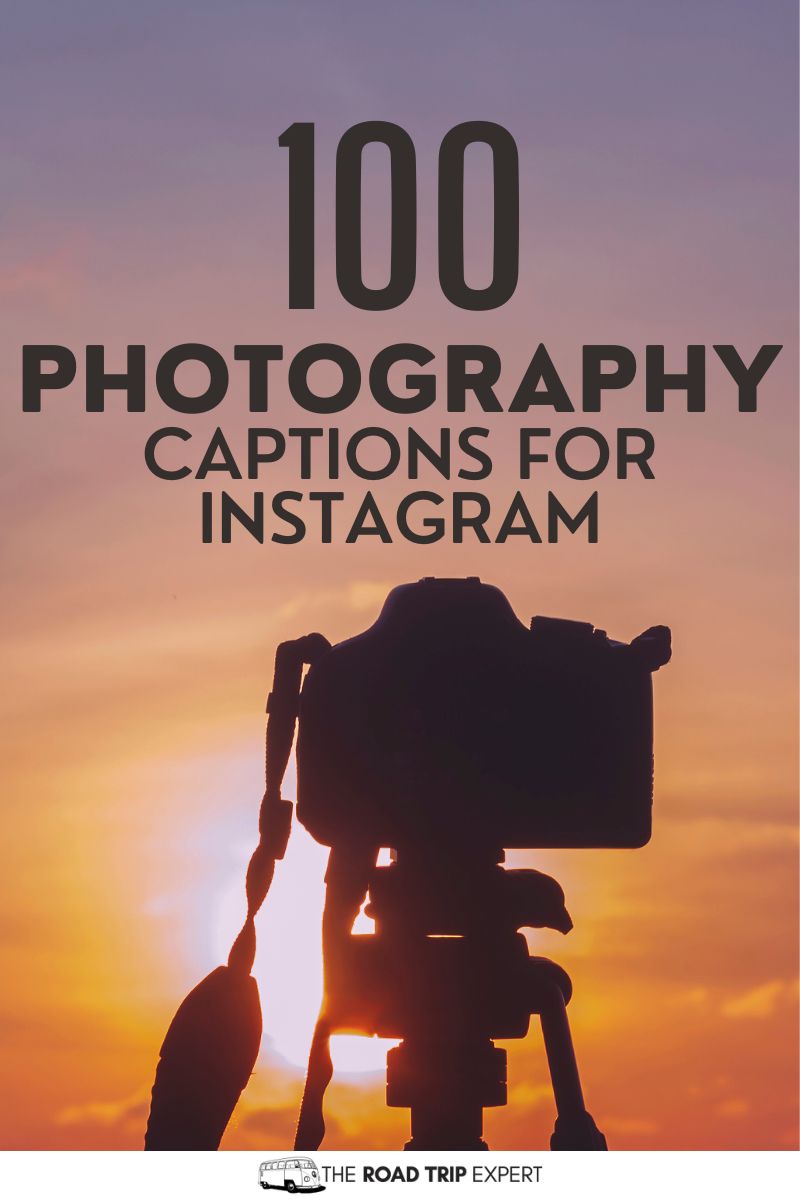The Power of Captions in Photography
Captions play a vital role in photography, serving as a bridge between the visual and emotional aspects of an image. A well-crafted caption can add context, evoke emotions, and increase engagement on Instagram, making it an essential element of a photographer’s online presence. When it comes to creating good Instagram captions for photography, it’s essential to consider the tone, language, and style that resonates with your audience.
A caption can be a powerful storytelling tool, providing insight into the photographer’s vision, creative process, and inspiration behind the image. By sharing the story behind the shot, photographers can create a deeper connection with their audience, fostering a sense of community and encouraging engagement. Furthermore, captions can be used to provide technical information, such as camera settings, lighting conditions, and editing techniques, making them a valuable resource for fellow photographers.
In addition to their creative and technical applications, captions also play a crucial role in Instagram’s algorithm. By including relevant keywords, hashtags, and tagging relevant accounts, photographers can increase the visibility of their posts, attract new followers, and grow their online presence. However, it’s essential to strike a balance between optimization and creativity, ensuring that captions remain engaging, informative, and authentic.
Ultimately, the power of captions in photography lies in their ability to elevate the image, providing a richer, more immersive experience for the viewer. By investing time and effort into crafting high-quality captions, photographers can unlock the full potential of their images, creating a lasting impact on their audience and establishing themselves as authorities in their field.
Understanding Your Audience: Tailoring Captions to Your Photography Niche
Understanding your target audience is crucial when it comes to creating effective captions for your photography. Different photography niches have unique audiences with distinct interests, preferences, and expectations. By tailoring your captions to your specific niche, you can increase engagement, build a loyal following, and establish yourself as an authority in your field.
To identify your target audience, start by analyzing your existing followers and engagement patterns. Look at the types of images that receive the most likes and comments, and identify common themes and interests. You can also use Instagram’s built-in analytics tools to gain insights into your audience’s demographics, interests, and behaviors.
Once you have a clear understanding of your target audience, you can start creating captions that resonate with them. For example, if you specialize in landscape photography, your captions might focus on the technical aspects of capturing stunning natural scenery, such as camera settings and composition techniques. On the other hand, if you specialize in portrait photography, your captions might focus on the emotional and personal aspects of capturing people’s stories and personalities.
Creating relevant content is also essential for engaging your target audience. Use keywords and hashtags that are relevant to your niche, and include links to your website or other social media channels to drive traffic and increase engagement. By tailoring your captions to your specific photography niche, you can create a loyal following and establish yourself as an authority in your field.
Good Instagram captions for photography are those that strike a balance between creativity, technicality, and relevance. By understanding your target audience and tailoring your captions to your specific niche, you can create captions that resonate with your followers, increase engagement, and drive traffic to your website.
How to Write Captions that Tell a Story
Writing captions that tell a story is an art that can elevate your photography and engage your audience on a deeper level. A good story can transport viewers to a different time and place, evoke emotions, and create a lasting impression. To write captions that tell a story, you need to use descriptive language, sensory details, and emotional connections.
Descriptive language is essential for painting a vivid picture in the viewer’s mind. Use sensory details like sights, sounds, and smells to bring your story to life. For example, instead of saying “I took this photo on a sunny day,” say “I captured this moment on a warm summer afternoon, with the sun casting a golden glow over the landscape.” This helps the viewer to imagine the scene and connect with the story on a deeper level.
Emotional connections are also crucial for creating a compelling story. Share your personal experiences, thoughts, and feelings to create a sense of authenticity and vulnerability. For example, if you’re sharing a photo of a beautiful landscape, you could say “This place holds a special meaning for me, as it’s where I proposed to my partner. Every time I look at this photo, I’m reminded of that special moment and the emotions that came with it.”
Good Instagram captions for photography should also be concise and engaging. Aim for a length of around 125-150 characters, and use a clear and concise writing style. Avoid using jargon or technical terms that might confuse your audience, and focus on creating a narrative that flows smoothly.
Finally, don’t be afraid to experiment and try new things. Writing captions that tell a story is a skill that takes time and practice to develop. Don’t be discouraged if your first attempts don’t yield the results you want – keep trying, and you’ll eventually find your voice and style.
The Art of Keeping it Short and Sweet: Crafting Concise Captions
Crafting concise captions is an essential skill for photographers who want to engage their audience on Instagram. With the platform’s algorithm favoring shorter captions, it’s crucial to learn how to edit and refine your captions for maximum impact. Good Instagram captions for photography should be brief, yet informative, and provide a clear understanding of the image and its context.
So, how do you craft concise captions that capture the essence of your photography? Start by identifying the key elements of your image, such as the subject, location, and mood. Then, use simple and clear language to describe these elements, avoiding unnecessary words and phrases. Remember, the goal is to provide a brief summary of the image, not to tell a long story.
Another important aspect of crafting concise captions is to use active voice instead of passive voice. Active voice makes your writing more engaging and easier to read, while passive voice can make it seem dull and uninteresting. For example, instead of saying “The photo was taken by me,” say “I took this photo.” This simple change can make a big difference in the tone and style of your caption.
Finally, don’t be afraid to use emojis and other visual elements to add a touch of personality to your captions. Emojis can help to convey emotions and add a playful tone to your writing, making it more engaging and fun to read. However, use them sparingly and only when they add value to the caption, as too many emojis can make it seem unprofessional.
By following these tips and techniques, you can craft concise captions that capture the essence of your photography and engage your audience on Instagram. Remember, the key is to keep it short and sweet, while still providing a clear understanding of the image and its context.
Using Humor and Personality in Your Captions
Humor and personality can be a powerful combination when it comes to crafting engaging captions for your photography. By injecting a bit of humor and personality into your captions, you can make your photography stand out and connect with your audience on a deeper level. Good Instagram captions for photography should be informative, yet entertaining, and provide a glimpse into the personality behind the lens.
So, how do you add humor and personality to your captions? Start by being authentic and genuine in your writing. Share your thoughts, feelings, and experiences, and don’t be afraid to show your personality. Use humor to break the ice and connect with your audience, but avoid using sarcasm or irony, as they can be misinterpreted.
Another way to add personality to your captions is to use tone and language that reflects your brand and photography aesthetic. Use words and phrases that are unique to your style and voice, and avoid using jargon or technical terms that might confuse your audience. Remember, the goal is to create a connection with your audience, not to impress them with your technical knowledge.
Emojis can also be a great way to add humor and personality to your captions. Use them sparingly, but effectively, to convey emotions and add a touch of whimsy to your writing. However, avoid using too many emojis, as they can make your captions seem unprofessional.
Finally, don’t be afraid to experiment and try new things. Humor and personality are subjective, and what works for one person may not work for another. Keep trying, and you’ll eventually find the tone and voice that works best for your photography and audience.
Optimizing Your Captions for Instagram’s Algorithm
Instagram’s algorithm is constantly evolving, and optimizing your captions for it can be a challenge. However, by understanding how the algorithm works and using the right strategies, you can increase the visibility of your posts and reach a wider audience. Good Instagram captions for photography should be optimized for the algorithm, including the use of keywords, hashtags, and tagging relevant accounts.
Keywords are an essential part of optimizing your captions for Instagram’s algorithm. Use relevant keywords that describe your photography, including the location, subject, and style. This will help your posts appear in search results and attract new followers. For example, if you’re a landscape photographer, use keywords like “landscape photography,” “nature photography,” and “outdoor photography.”
Hashtags are another important aspect of optimizing your captions for Instagram’s algorithm. Use relevant hashtags that describe your photography, including the location, subject, and style. This will help your posts appear in hashtag feeds and attract new followers. For example, if you’re a portrait photographer, use hashtags like “#portraitphotography,” “#photography,” and “#portrait.”
Tagging relevant accounts is also an effective way to optimize your captions for Instagram’s algorithm. Tag other photographers, influencers, and brands in your niche to increase the visibility of your posts and attract new followers. For example, if you’re a wildlife photographer, tag other wildlife photographers and conservation organizations to reach a wider audience.
Finally, use Instagram’s built-in features to optimize your captions for the algorithm. Use Instagram’s alt text feature to add descriptive text to your images, and use Instagram’s shopping feature to tag products and services. This will help your posts appear in search results and attract new followers.
Examples of Effective Captions for Different Photography Styles
Good Instagram captions for photography can vary depending on the style of photography. Here are some examples of effective captions for different photography styles:
Landscape Photography: “Sunset over the mountains, where the sky meets the earth. 🌅🏔️” This caption is short and sweet, and uses relevant hashtags and emojis to add context and visual interest.
Portrait Photography: “Capturing the beauty of the human spirit, one face at a time. 💫📸” This caption is more introspective and emotive, and uses a quote to add depth and meaning.
Street Photography: “The city never sleeps, and neither do I. 🌆📸” This caption is more playful and humorous, and uses a popular phrase to add a touch of personality.
Wildlife Photography: “In the wild, where the beauty of nature reigns supreme. 🦁🌿” This caption is more descriptive and informative, and uses relevant hashtags and emojis to add context and visual interest.
These examples demonstrate how different photography styles can be showcased through effective captions. By using relevant hashtags, emojis, and quotes, photographers can add context and visual interest to their captions, and engage their audience in a more meaningful way.
Ultimately, the key to writing good Instagram captions for photography is to be authentic, creative, and engaging. By showcasing your personality and style through your captions, you can build a loyal following and establish yourself as a talented photographer.
Putting it All Together: Creating a Consistent Captioning Style
Creating a consistent captioning style is essential for building a strong brand and photography aesthetic on Instagram. By developing a unique voice and tone, you can differentiate yourself from other photographers and attract a loyal following. Good Instagram captions for photography should reflect your brand and style, and be consistent across all your posts.
To create a consistent captioning style, start by identifying your brand and photography aesthetic. What sets you apart from other photographers? What tone and voice do you want to convey through your captions? Once you have a clear understanding of your brand and style, you can start developing a consistent captioning style.
One way to create a consistent captioning style is to use a consistent tone and voice across all your posts. This can be achieved by using a specific language and syntax, and by injecting humor and personality into your captions. For example, if you’re a landscape photographer, you could use a more descriptive and poetic tone to describe your images.
Another way to create a consistent captioning style is to use a consistent format and structure across all your posts. This can be achieved by using a specific format for your captions, such as including a brief description of the image, followed by a quote or a personal anecdote. For example, if you’re a portrait photographer, you could use a format that includes a brief description of the subject, followed by a quote or a personal anecdote about the shoot.
Finally, to create a consistent captioning style, it’s essential to edit and refine your captions regularly. This can be achieved by reviewing your captions regularly, and making sure they align with your brand and style. By doing so, you can ensure that your captions are consistent across all your posts, and that they reflect your brand and photography aesthetic.







